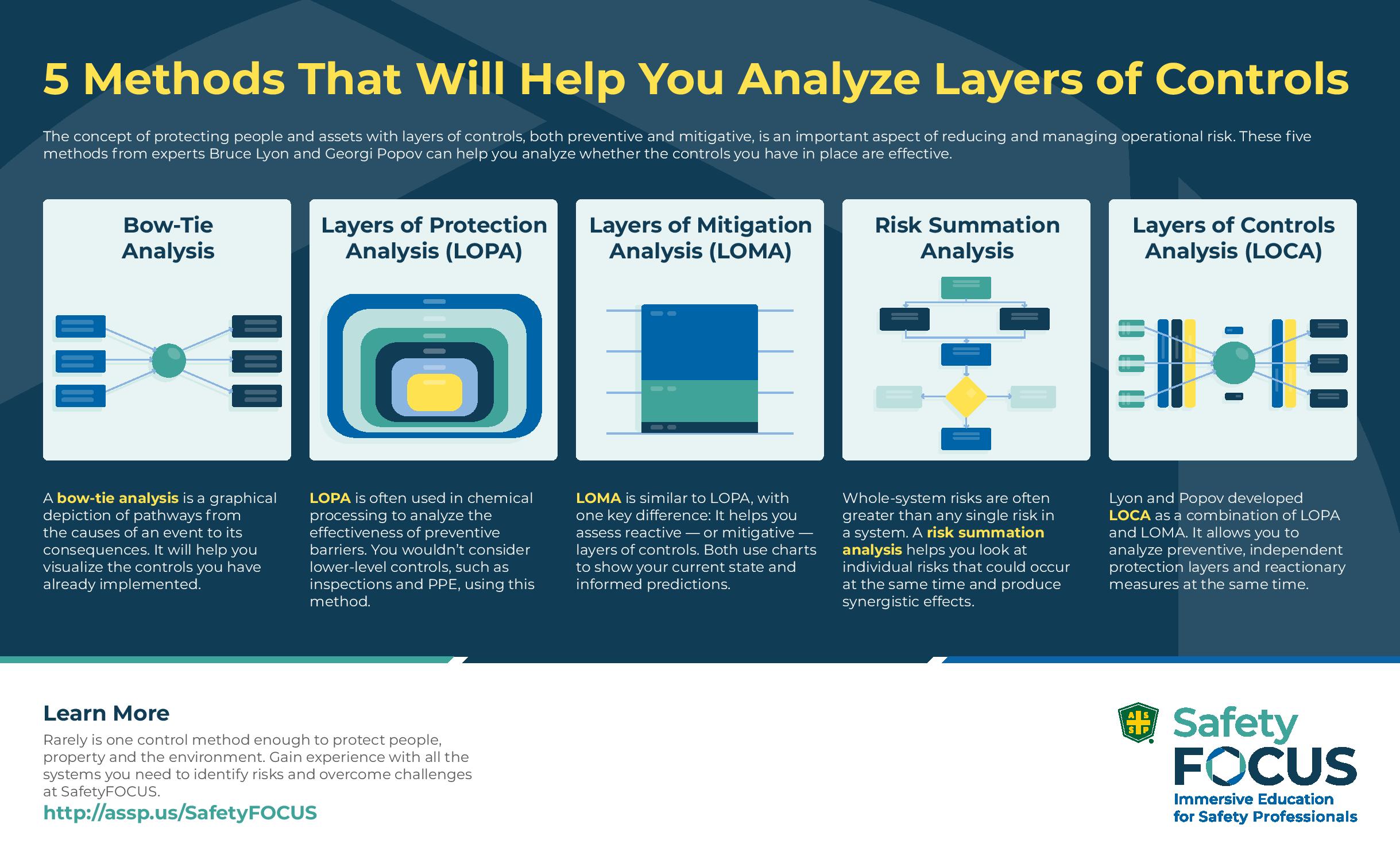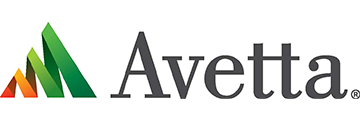Share

The concept of protecting people and assets with layers of controls, both preventive and mitigative, is an important aspect of reducing and managing operational risk. These five methods from experts Bruce Lyon and Georgi Popov can help you analyze whether the controls you have in place are effective.
A bow-tie analysis is a graphical depiction of pathways from the causes of an event to its consequences. It will help you visualize the controls you have already implemented.
LOPA is often used in chemical processing to analyze the effectiveness of preventive barriers. You wouldn’t consider lower-level controls, such as inspections and PPE, using this method.
LOMA is similar to LOPA, with one key difference: It helps you assess reactive — or mitigative — layers of controls. Both use charts to show your current state and informed predictions.
Whole-system risks are often greater than any single risk in a system. A risk summation analysis helps you look at individual risks that could occur at the same time and produce synergistic effects.
Lyon and Popov developed LOCA as a combination of LOPA and LOMA. It allows you to analyze preventive, independent protection layers and reactionary measures at the same time.
Learn More
Rarely is one control method enough to protect people, property and the environment. Gain experience with all the systems you need to identify risks and overcome challenges at SafetyFOCUS: Safety Management Systems
http://assp.us/SafetyFOCUS
For more insight into these five analytical methods, read “Managing Risk Through Layers of Control” in the April 2020 issue of Professional Safety.
Gain the technical resources, community and continuing education units (CEUs) you need to stay ahead. Join your peers at SafetyFOCUS.
Back to home page Read next article





